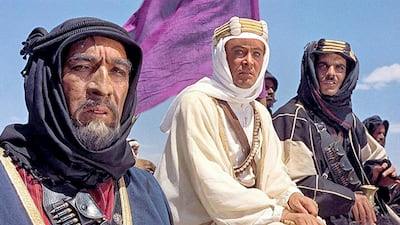Famed for his Bedouin dress, fluency in Arabic and love for revolt, 20th century British diplomat Thomas Edward Lawrence is perhaps best known in the posthumous 1962 blockbuster film Lawrence of Arabia.
Yet for all his fame and achievements, Lawrence’s childhood home is in danger of disappearing thanks to decay and potential property developers.
On Wednesday, Conservative politician Rory Stewart announced a public campaign to help save Lawrence’s nine-bedroom childhood home in Oxford.
Mr Stewart’s recent bid to become Britain’s prime minister set the world of social media alight (through his unorthodox Twitter videos and speaking Dari to London locals).
Now firmly on the backbenches away from the spotlight, Mr Stewart on Wednesday called for Lawrence’s nine-bedroom childhood home to be saved and turned into a public centre of study and museum preserving the diplomat’s early life.
"It's beginning to deteriorate," Mr Stewart told The Times newspaper.
“An elderly man lived in it for years, and not much has been done in that time to keep it in good shape. Another winter will do real damage to the structure, and the danger is that the owners will offer it at public auction at a knock-down price”.
He believes that the poor condition of the Lawrence family home could make it “easy for a developer to make a case for knocking part of it down”.
The house is valued at £2.7 million (Dh12.03m) and needs an additional £1m in renovation.
“We believe the house should be bought and returned to its condition of a century ago, when Lawrence lived there.”
Known for his work as an archaeologist and photographer in the Middle East, Lawrence joined the British Army during the First World War in 1941 and posted to Cairo, Egypt. He lived there for two years before joining the Arab Revolt against the Ottoman Empire.
Lawrence is said to have strongly identified with Arab customs, notably seen wearing Bedouin dress and impressing the Emir of Makkah so much so that he became an advisor.
As a child, Lawrence lived in the Oxford home with his four brothers.
“The rooms are just as they always were. There is plenty of stained glass, which he would have known from his childhood, and one or two items of furniture may even date from his time,” Mr Stewart says.
Lawrence's public profile grew thanks to photographs of him, taken by American journalist Thomas Lowell, capturing the British imagination of an Englishman in the Islamic World. Initially, he embraced the added publicity but is said to have regretted it before his untimely death in a motorbike accident in Dorset, aged 46.
This isn't the first time Mr Stewart has dipped his feet into the world of arts conservation. He set up Turquoise Mountain in 2006, a charity inspired by the Arts & Crafts Movement helping to restore historic buildings in Kabul, Afghanistan.
According to the official website, Turquoise Mountain has restored 65 buildings and trained 200 local men and women in traditional crafts.
Mr Stewart is joined by the BBC’s war reporter John Simpson in campaigning for the preservation of Lawrence’s family home.





